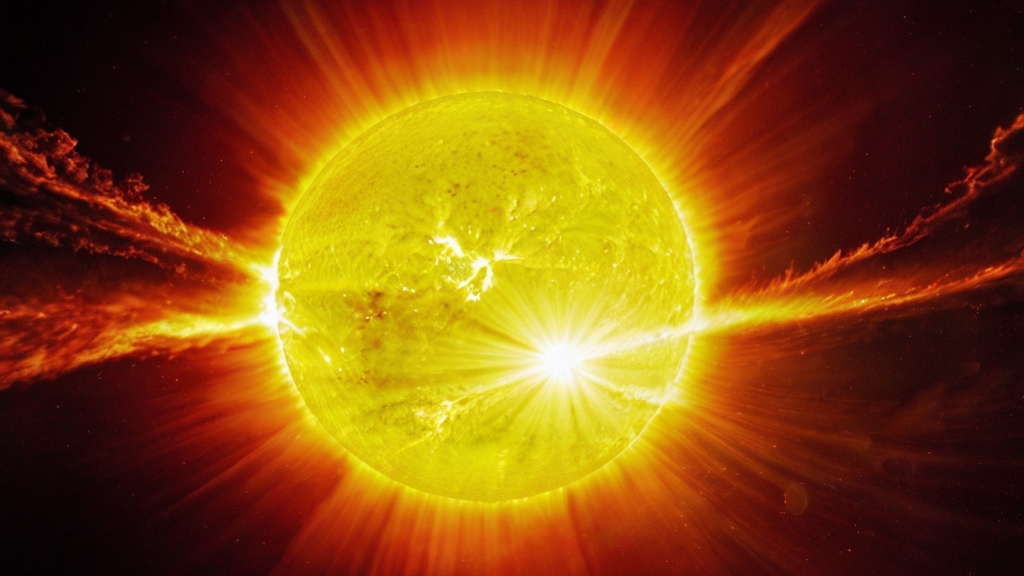In the vast expanse of the cosmos, our planet Earth is currently at the forefront of an extraordinary cosmic saga. Recently, the Sun, our celestial furnace of life, unleashed a mesmerizing spectacle known as a Coronal Mass Ejection (CME), aptly christened the “Canyon of Fire” by NASA. This breathtaking event, captured in stunning detail by NASA’s Solar Dynamics Observatory on March 17th, marked the genesis of a cosmic odyssey with Earth squarely in its trajectory.
As the immense waves of solar energy from the CME hurtled through space towards our planet, anticipation among scientists and space enthusiasts alike reached a fever pitch. However, the celestial choreography took an unexpected turn when the CME arrived later than initially projected, brushing against Earth’s magnetic field during the early hours of March 21st. Although the initial impact failed to ignite an immediate geomagnetic storm, the lingering effects of the CME’s magnetized wake have prompted the issuance of a geomagnetic storm alert, signaling a potential celestial tempest on the horizon.
This cosmic encounter unfolds against the backdrop of Earth’s transition through the Vernal Equinox, a celestial phenomenon where the planet’s magnetic defenses are at their most vulnerable. This vulnerability, known as the Russell-McPherron effect, amplifies the impact of even the slightest solar disturbances, underscoring the intricate interplay between Earth and the cosmos.
Beyond the awe-inspiring spectacle of the auroras lies a palpable threat to our technological infrastructure. Solar storms, such as the one currently looming, possess the potential to disrupt communication systems, destabilize power grids, and unleash chaos upon our interconnected world. The consequences of such disruptions serve as a sobering reminder of humanity’s dependence on the delicate balance of cosmic forces.
In response to the ever-present threat posed by space weather, the global scientific community has mobilized its resources to unravel the mysteries of solar dynamics. Collaborative endeavors, spearheaded by esteemed institutions like NASA, have yielded unprecedented insights into the mechanisms governing solar storms. Recent breakthroughs, exemplified by the multi-perspective observation of the April 17, 2021, solar outburst, highlight the transformative power of collective scientific inquiry.
Colin Wilson, ExoMars TGO project scientist, articulates the urgency of such research in the context of humanity’s quest for cosmic exploration. As mankind embarks on ambitious missions to explore the depths of space, understanding and mitigating the risks posed by space weather become imperative to ensure the safety and success of future endeavors.
Looking towards the horizon, ambitious initiatives such as the Geospace Dynamics Constellation (GDC), SunRISE, PUNCH, and HelioSwarm stand poised to revolutionize our understanding of space weather dynamics. By harnessing advanced instrumentation and fostering collaboration across borders, scientists aim to unlock the secrets of the cosmos and pave the way for humanity’s continued exploration of the final frontier.
As Earth navigates the cosmic currents, the recent geomagnetic storm alert serves as a poignant reminder of our interconnectedness with the universe. Armed with curiosity, ingenuity, and a relentless spirit of exploration, humanity embarks on a grand voyage into the unknown, eager to unravel the mysteries of the cosmos and chart a course towards a brighter future amidst the stars.
